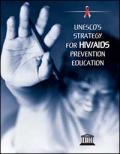Publications - Released in 2004
In two decades HIV/AIDS has evolved from a medical curiosity to a worldwide human tragedy and an international emergency. It is a development disaster and a security crisis with social impacts more devastating than any war. It has reduced life expectancy by 15 years in sub-Saharan Africa and created more than 14 million orphans. Its impact is wide-reaching, and even in those parts of the world where the epidemic has been relatively slow to evolve, there are worrying signs of its gathering strength. It has spread nearly everywhere beyond the first so-called high-risk groups, today principally affecting vulnerable populations: the poor, the marginalized, young women and children. It both thrives on and fuels inequalities. Although there are signs of hope — some evidence that political commitment and energetic multisectoral programmes can slow the progression, some encouraging developments in the supply of treatment and care — measures to contain the epidemic or mitigate its effects take time. The effects of HIV/AIDS, even if the situation improves in the near future, will be with us until the end of this century.
Downloads
Organizations
- United Nations Educational, Scientific and Cultural Organization (UNESCO)






